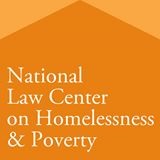Middle Income Housing Tax Credit Act: Missed Chance to Address Housing Crisis
Washington D.C. – (RealEstateRama) — The National Law Center on Homelessness & Poverty (the Law Center) is concerned that legislation to create a Middle Income Housing Tax Credit (MIHTC), introduced by Senator Ron Wyden on September 22, would focus scarce federal resources on middle income renters – rather than on extremely low income renters – who face the greatest need.

In a letter to Senator Wyden, Maria Foscarinis, Executive Director of the Law Center, noted that there is a critical shortage of affordable housing for low income people, and this is the leading cause of homelessness in America.
But instead of addressing this critical shortage, the proposed MIHTC would use scarce federal resources to encourage development of affordable housing for households earning the Area Median Income (AMI). Sixty percent of the units would be targeted to households earning median income, while the remaining forty percent of units would have no income targeting at all.
The crisis in affordable housing for low and extremely low income Americans is well documented. According to a recent report by the National Low Income Housing Coalition, The Gap: The Affordable Housing Gap Analysis 2016, America’s 10.4 million extremely low-income renter households face a shortage of 7.2 million affordable and available apartments. In fact, for every 100 extremely low-income renter households, there are just 31 affordable and available rental homes. These households include seniors, people with disabilities and families with children.
Similarly, according a 2016 report from the Joint Center on Housing Studies at Harvard University, the number of renters with incomes at or below area median income who are eligible for federal housing assistance has soared. Demand far outstrips supply, with only 26% of those poor enough to be eligible for assistance actually receiving it. The number of cost-burdened renters (renters paying over 30% of their income for housing) has risen to record levels. As noted in the report, these vulnerable tenants risk falling into homelessness. The impact of homelessness—including on children is severe and long lasting, as described in the Law Center’s No Barriers Report.
Ms. Foscarinis stated: “Increased federal resources to help vulnerable renters is imperative. The current Administration has made a commitment to ending homelessness and it is essential that Congress prioritize legislation and resources towards that urgent goal. In its current form, the proposed Middle Income Housing Tax Credit Act of 2016 falls wide of the mark.”
###
The National Law Center on Homelessness & Poverty (www.nlchp.org) is the only national organization dedicated solely to using the power of the law to prevent and end homelessness. With the support of a large network of pro bono lawyers, we address the immediate and long-term needs of people who are homeless or at risk through outreach and training, advocacy, impact litigation, and public education.
Contact: Grace Beal
(202) 638-2535 ext. 105









